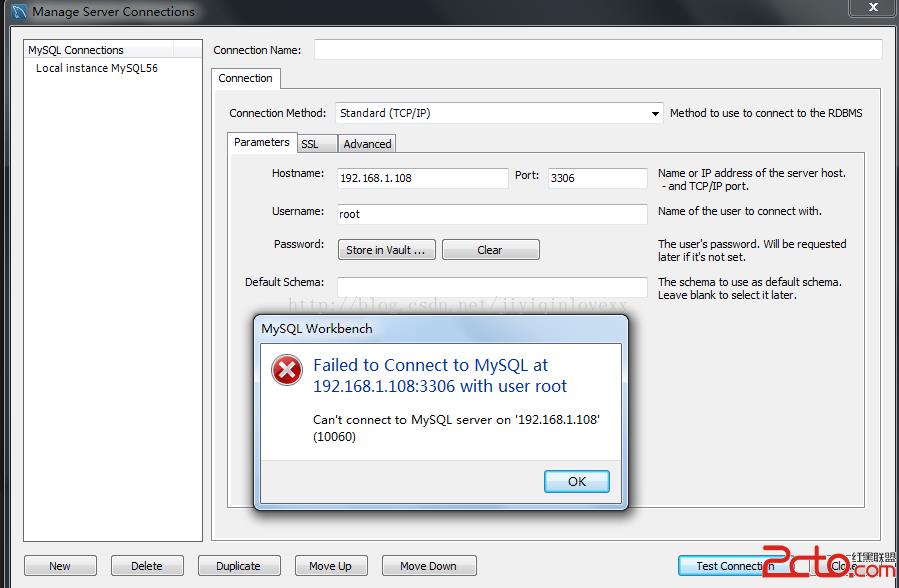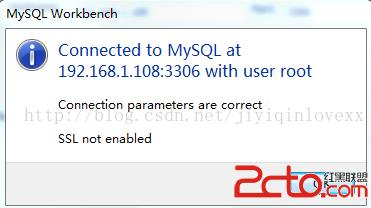CentOS-7下安装MySQL5.6.22
Posted
tags:
篇首语:本文由小常识网(cha138.com)小编为大家整理,主要介绍了CentOS-7下安装MySQL5.6.22相关的知识,希望对你有一定的参考价值。
一 安装环境
(1)CentOS版本:CentOS-7
查看方法:
[[email protected] 桌面]# cat /etc/redhat-release
CentOS Linux release 7.0.1406 (Core)
来源:官网下载
下载地址:http://www.centos.org/
(2)MySQL版本:MySQL-5.6.22
来源:官网下载
下载地址:https://edelivery.oracle.com/EPD/Search/handle_go
或者http://pan.baidu.com/s/1dDu6n9R
名称:mysql Database 5.6.22 RPM for Oracle Linux / RHEL 7 x86 (64bit)
二 安装方式选择
在网上搜了一下,Linux下安装MYSQL有三种方式:
1 通过yum命令在线下载安装
2 下载离线rpm安装包安装
3 下载源码编译安装
方式1不打算用,因为我们大部分项目服务器是不能直接上Internet的,网上关于在线安装的教程很多,方式3对于只要应用MYSQL的人来说没必要多此一举。
三 安装步骤
1. 解压下载的zip包,会发现有以下几个rpm包:
MySQL-client-advanced-5.6.22-1.el7.x86_64.rpm
MySQL-devel-advanced-5.6.22-1.el7.x86_64.rpm
MySQL-embedded-advanced-5.6.22-1.el7.x86_64.rpm
MySQL-server-advanced-5.6.22-1.el7.x86_64.rpm
MySQL-shared-advanced-5.6.22-1.el7.x86_64.rpm
MySQL-shared-compat-advanced-5.6.22-1.el7.x86_64.rpm
MySQL-test-advanced-5.6.22-1.el7.x86_64.rpm
2. 卸载MariaDB
如果直接点击rpm包安装会得到错误提示。因为CentOS的默认数据库已经不再是MySQL了,而是MariaDB,为什么呢?
MariaDB数据库管理系统是MySQL的一个分支,主要由开源社区在维护,采用GPL授权许可。开发这个分支的原因之一是:甲骨文公司收购了MySQL后,有将MySQL闭源的潜在风险,因此社区采用分支的方式来避开这个风险。MariaDB的目的是完全兼容MySQL,包括API和命令行,使之能轻松成为MySQL的代替品。
查看当前安装的mariadb包:
[[email protected] 桌面]# rpm -qa | grep mariadb
将它们统统强制性卸载掉:
[[email protected] 桌面]# rpm -e --nodeps mariadb-libs-5.5.35-3.el7.x86_64
[[email protected] 桌面]# rpm -e --nodeps mariadb-5.5.35-3.el7.x86_64
[[email protected] 桌面]# rpm -e --nodeps mariadb-server-5.5.35-3.el7.x86_64
3. 安装MYSQL
双击下面三个包进行自动安装:
MySQL-client-advanced-5.6.22-1.el7.x86_64.rpm
MySQL-devel-advanced-5.6.22-1.el7.x86_64.rpm
MySQL-server-advanced-5.6.22-1.el7.x86_64.rpm
提示:其实第二个包devel我也不知道是干什么的,也不知道是不是必须的(上网搜了一下应该不是必须的),没有测试是否必须就已经点来装上了,也不想花时间去测试是否必须了,有测试过的朋友麻烦留言告知。
4. 启动MYSQL
[[email protected] 桌面]#service mysql start
得到错误:ERROR!The server quit without updating PID file
我们这里主要是因为:selinux惹的祸,如果是centos系统,默认会开启selinux。解决方法是关闭它,打开/etc/selinux/config,把SELINUX=enforcing改为SELINUX=disabled后存盘退出重启机器。
然后再启动mysql就没问题了:
[[email protected] 桌面]#service mysql start
查看MySQL运行状态:
[[email protected] 桌面]# service mysql status
SUCCESS! MySQL running (2377)
5. 默认root用户登录MYSQL
[[email protected] 桌面]# mysql -u root -p
Enter password:
ERROR 1045 (28000):Access denied for user ‘root‘@‘localhost‘ (using password: YES)
发现有有错误,然后在网上查了一下说使用下面命令修改root初始化密码:
[[email protected] 桌面]# /usr/bin/mysqladmin -u root password ‘passok‘
/usr/bin/mysqladmin: connect to server at‘localhost‘ failed
error: ‘Accessdenied for user ‘root‘@‘localhost‘ (using password: NO)‘
发现MYSQL数据库默认的root用户还是没办法设置密码进行登录,需要做一下操作:
重置MySQL中root用户密码及验证
还是不行,然后在网上又找到一个重置MySQL中root用户密码及验证的方法:
(1) 停止MySQL服务
[[email protected] 桌面]# service mysql stop
Shutting down MySQL.. SUCCESS!
(2) 输入绕过密码认证命令
[[email protected] 桌面]# mysqld_safe --user=mysql --skip-grant-tables--skip-networking &
[1] 5807
150117 22:23:31 mysqld_safe Logging to ‘/var/lib/mysql/bogon.err‘.
150117 22:23:31 mysqld_safe Starting mysqlddaemon with databases from /var/lib/mysql
(3) 输入登录用户命令
[[email protected] 桌面]# mysql -u root mysql
Reading table information for completion oftable and column names
You can turn off this feature to get aquicker startup with -A
Welcome to the MySQL monitor. Commands end with ; or \g.
Your MySQL connection id is 1
Server version:5.6.22-enterprise-commercial-advanced MySQL Enterprise Server - AdvancedEdition (Commercial)
Copyright (c) 2000, 2014, Oracle and/or itsaffiliates. All rights reserved.
Oracle is a registered trademark of OracleCorporation and/or its
affiliates. Other names may be trademarksof their respective
owners.
Type ‘help;‘ or ‘\h‘ for help. Type ‘\c‘ toclear the current input statement.
(4) 输入修改root密码SQL语句
mysql> UPDATEuser SET Password=PASSWORD(‘passok‘) where USER=‘root‘;
Query OK, 4 rows affected (0.04 sec)
Rows matched: 4 Changed: 4 Warnings: 0
(5) 输入数据刷新命令
mysql> FLUSHPRIVILEGES;
Query OK, 0 rows affected (0.00 sec)
(6) 退出
mysql> quit
Bye
(7) 启动MYSQL
[[email protected] 桌面]# service mysql start
Starting MySQL SUCCESS!
登录mysql,查看所有数据库:
[[email protected] 桌面]# mysql -u root -p
mysql> show databases;
ERROR 1820 (HY000):You must SET PASSWORD before executing this statement
还是有错误啊,提示要再设置一下密码:
mysql> SETPASSWORD = PASSWORD(‘passok‘);
Query OK, 0 rows affected (0.00 sec)
显示数据库:
mysql> show databases;
+--------------------+
| Database |
+--------------------+
| information_schema |
| mysql |
| performance_schema |
| test |
+--------------------+
4 rows in set (0.00 sec)
进入数据库创建表、显示表:
mysql> use test;
Database changed
mysql> show tables;
Empty set (0.02 sec)
mysql>create table testTable(name char(15) not null,passwd char(15) not null);
Query OK, 0 rows affected (0.87 sec)
mysql> show tables;
+----------------+
| Tables_in_test |
+----------------+
| testTable |
+----------------+
1 row in set (0.00 sec)
备注:我的设置的密码是“passok”。大家在执行showdatabases收到错误ERROR 1820 (HY000): You must SET PASSWORD before executing this statement后也可以试试以下面方式登录mysql来执行showdatabases是否就不会有这个错误,我没有条件测试了:
登录MySQL界面:mysql –uroot -p(修改的新密码)
例如:mysql -u root -p123456
mysql安装后三个主要的目录及其功能:
/var/lib/mysql 数据库文件
/usr/share/mysql 命令及配置文件
/usr/bin mysqladmin、mysqldump等命令
6. windows7上使用workbench连接到远端MySQL Server
(1) 下载安装workbench(MySQL Workbench 6.2.4 MSI for Windows x86(64bit))
(2) Windows下安装mysql workbench需要具备以下环境:
Microsoft .NET Framework 4 Client Profile
Microsoft Visual C++ 2013 RedistributablePackage (x64)
第一个就不用说了,第二个下载地址在:
http://www.microsoft.com/zh-CN/download/details.aspx?id=40784
(3)安装完成之后打开,进行连接配置:

发现连不上。
打开cmd命令行输入telnet 192.168.1.108 3306也提示连接不上(BTY:windows7默认没有安装telnet,需要通过控制面板中的打开或者关闭windows功能来打开telnet客户端功能)。
如果要想远端访问MYSQL数据库,还需要:
(1) 给指定用户赋予远端访问mysql数据库的权限;
(2) 配置防火墙放开对3306端口的限制;
1给指定用户赋予远端访问mysql数据库的权限
授权命令是:
grant 权限1,权限2,…权限n on 数据库名.表名 to用户名@用户地址 identified by‘口令’
[[email protected] 桌面]# mysql -uroot-ppassok -e "GRANT ALL PRIVILEGES ON *.* TO‘root‘@‘%‘ IDENTIFIED BY ‘passok‘ WITH GRANT OPTION;"
Warning: Using a password on the commandline interface can be insecure.
用root用户的身份执行grant命令(-e参数表示执行一段sql命令),含义是:把在所有数据库的所有表的所有权限赋值给位于所有IP地址的root用户。如果你只想让位于192.168.1.108机器上面的root用户访问,命令如下:
mysql -uroot -ppassok -e "GRANT ALL PRIVILEGES ON *.* TO‘root‘@‘192.168.1.108‘ IDENTIFIED BY ‘passok‘ WITH GRANT OPTION;"
2 配置防火墙放开3306端口的限制
CentOS 7.0版本的防火墙,默认使用的是firewall,与之前的版本使用iptables是不一样,经过我的测试,只要firewall处于开启状态,就不可能远端访问MYSQL数据库。
首先将firewall关闭:
[[email protected] 桌面]# systemctl stop firewalld.service #停止firewall
[[email protected] 桌面]# systemctl disable firewalld.service #禁止firewall开机启动
CentOS虽然默认的不是iptables,但是也是已经安装好的,然后我按照网上的方法,为3306端口配置开放规则:
[[email protected] 桌面]# vi /etc/sysconfig/iptables
# sample configuration for iptables service
# you can edit this manually or usesystem-config-firewall
# please do not ask us to add additionalports/services to this default configuration
*filter
:INPUT ACCEPT [0:0]
:FORWARD ACCEPT [0:0]
:OUTPUT ACCEPT [0:0]
-A INPUT -m state --stateRELATED,ESTABLISHED -j ACCEPT
-A INPUT -p icmp -j ACCEPT
-A INPUT -i lo -j ACCEPT
-ARH-Firewall-1-INPUT -m state --state NEW -m tcp -p tcp --dport 3306 -j ACCEPT
-A INPUT -p tcp -m state --state NEW -m tcp--dport 22 -j ACCEPT
-A INPUT -j REJECT --reject-withicmp-host-prohibited
-A FORWARD -j REJECT --reject-withicmp-host-prohibited
COMMIT
然后重启防火墙:
[[email protected] 桌面]# service iptables restart
然后立刻用mysql workbench测试,发现还是一样连不上。
然后执行下面命令永久关闭iptables:
[[email protected] bin]# chkconfig iptables off
注意:正在将请求转发到“systemctl disable iptables.service”。
然后立刻用mysql workbench测试,发现还是一样连不上。
重启CentOS系统,连接成功

看来要重启才能生效。
进一步测试:
查看firewall状态是关闭的:
[[email protected] bin]# service firewall status
Redirecting to /bin/systemctl status firewall.service
firewall.service
Loaded: not-found (Reason: No such file or directory)
Active: inactive (dead)
查看iptables状态也是关闭的:
[[email protected] bin]# service iptables status
Redirecting to /bin/systemctl status iptables.service
iptables.service - IPv4 firewall withiptables
Loaded: loaded (/usr/lib/systemd/system/iptables.service; disabled)
Active: inactive (dead)
然后我又启动iptables防火墙,还是能够访问,然后把/etc/sysconfig/iptables中的规则全部注释掉之后,还是能够访问,重启还是可以,不知道为什么,查看iptables的状态也是处于激活状态的:
[[email protected]]# service iptables status
Redirecting to /bin/systemctl status iptables.service
iptables.service - IPv4 firewall withiptables
Loaded: loaded (/usr/lib/systemd/system/iptables.service; disabled)
Active: active (exited) since 日 2015-01-1818:17:07 CST; 20s ago
Process: 14440 ExecStop=/usr/libexec/iptables/iptables.init stop(code=exited, status=0/SUCCESS)
Process: 14648 ExecStart=/usr/libexec/iptables/iptables.init start(code=exited, status=0/SUCCESS)
MainPID: 14648 (code=exited, status=0/SUCCESS)
1月 18 18:17:07 bogoniptables.init[14648]: iptables: Applying firewall rules: [ 确定 ]
1月 18 18:17:07 bogonsystemd[1]: Started IPv4 firewall with iptables.
反正永久关闭iptables防火墙是可以的,但是记得要重启。
7. 设置mysql开机自启动
设置开机启动服务选择使用chkconfig命令,可以看到我们永久性关闭iptables就用的这个命令,命令的格式如下:
chkconfig 功能说明:检查,设置系统的各种服务。
语法:chkconfig [--add][--del][--list][系统服务]或 chkconfig [--level <等级代号>][系统服务][on/off/reset]
--add 添加服务
--del 删除服务
--list 查看各服务启动状态
我这里安装好了mysql之后默认就是开机自启动的:
[[email protected] 桌面]# chkconfig --list mysql
注意:该输出结果只显示 SysV 服务,并不包含原生 systemd 服务。SysV 配置数据可能被原生 systemd 配置覆盖。
如果您想列出 systemd 服务,请执行 ‘systemctl list-unit-files‘。
欲查看对特定 target 启用的服务请执行
‘systemctl list-dependencies [target]‘。
mysql 0:关 1:关 2:开 3:开 4:开 5:开 6:关
如果不是开机自启动,使用开启MySQL服务自动开启命令:
chkconfig mysqld on
chkconfig mysql on
以上是关于CentOS-7下安装MySQL5.6.22的主要内容,如果未能解决你的问题,请参考以下文章
centos6.7下安装mysql5.6.22同时解决中文乱码问题